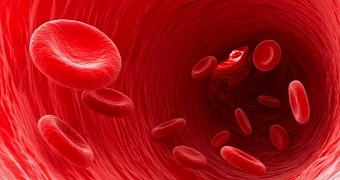An innovative method to diagnose malaria brings new hope to people living in the developing world, where the accurate technology and expertise needed to pin down cases of this disease are pretty much lacking.
This new method is the brainchild of scientists working with the Massachusetts Institute of Technology in the US, and it boils down to browsing for parasite waste in red blood cells.
Writing in the journal Nature Medicine, the researchers explain that, after infecting such cells, the parasite responsible for causing malaria begins to feed on the hemoglobin that they carry.
While busy feasting on hemoglobin, the Plasmodium parasite triggers the release of iron, which it then converts into hemozoin in order to keep safe from its toxicity. Thus, hemozoin is the waste product that researchers say can help diagnose malaria.
In their paper, the scientists explain that, according to their investigations into the matter at hand, the presence of hemozoin in infected red blood cells can be detected with the help of magnetic resonance relaxometry, a technique similar to magnetic resonance imaging.
They go on to argue that this method of diagnosing malaria is more reliable and more cost-effective than the traditional approach, which involves having technician count the parasites visible in blood smeared across a glass slide.
“There’s a lot of human-to-human variation regarding what counts as infected red blood cells versus some dust particles stuck on the plate. It really takes a lot of practice,” researcher Jongyoon Han explained in a statement.
“I think there is a strong potential here, and I look forward to its further development for reliable field deployment,” added specialist Donhee Ham with the University of Harvard in the US, who was not involved in this research project.

 14 DAY TRIAL //
14 DAY TRIAL //